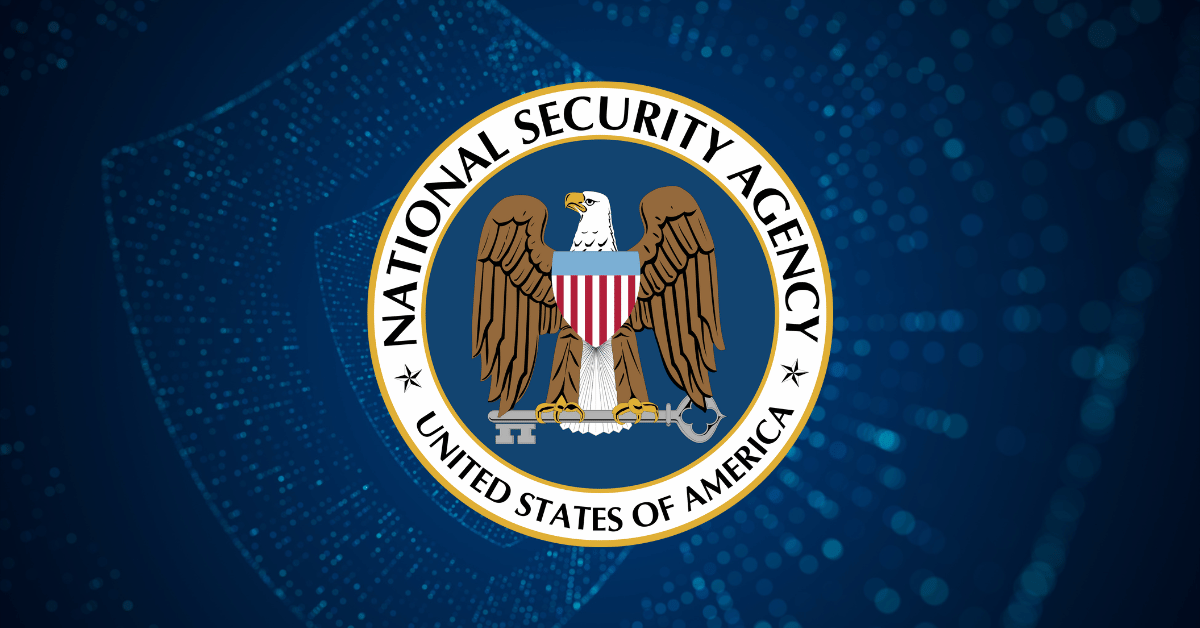The National Security Agency (NSA) has released its comprehensive set of zero trust network security guidelines. As stewards of national security, the agency’s pivot towards the a defined NSA zero trust model not only underscores its criticality but also serves as a beacon for organizations aiming to fortify their cyber defenses. The NSA Zero Trust security framework adheres to the President’s Executive Order of Improving the Nation’s Cybersecurity (EO 14028) and National Security Memorandum 8 (NSM-8). This exploration delves into the essence of these guidelines, providing a strategic overview, understanding the motivations behind their inception, and how they address the myriad pain points facing Chief Information Security Officers (CISOs) today. Moreover, it casts a vision on how adopting these principles can pave the way for a more secure digital future.
The Essence of Zero Trust and Its Importance
Zero Trust represents a foundational shift in the security paradigm, transcending traditional boundaries to address the complexities of modern network environments. At its heart, Zero Trust embodies the philosophy of “never trust, always verify,” a crucial departure from past security models that operated under a presumption of trust once inside the network perimeter. This innovative approach acknowledges a critical reality: threats can and do emerge from both external and internal sources, necessitating a vigilant and unwavering scrutiny of all network traffic, irrespective of its origin.
The adoption of Zero Trust is imperative in an era where the digital landscape is both boundless and perpetually evolving. Traditional security measures falter in the face of sophisticated cyber threats that exploit the inherent trust in legacy systems. Zero Trust, by contrast, offers a robust and agile framework, capable of dynamically responding to and mitigating risks as they arise. It demands the comprehensive authentication of identities and stringent authorization of access rights, thereby ensuring that only validated users and devices can engage with critical network resources.
Furthermore, the principle of minimizing access to only what is necessary—often referred to as the principle of least privilege—serves to not only enhance security but also significantly reduce the potential impact of breaches by limiting unauthorized access to sensitive data and systems. This methodical constriction of access paths and stringent control mechanisms are pivotal in constructing a security architecture resilient to the multifaceted threats that besiege today’s digital enterprises.
In essence, Zero Trust is not merely a strategy but a necessity, a guiding beacon for organizations navigating the treacherous waters of cybersecurity. Its adoption heralds a proactive stance against the relentless tide of cyber threats, fortifying defenses and securing the future of digital enterprises in an ever-connected world.
The NSA’s Zero Trust Recommendations: A Strategic Overview
Within the ambit of the NSA’s strategic initiative to revolutionize network security, the agency’s zero trust guidelines emerge as a beacon of transformation, guiding organizations on a journey toward a more secure and resilient digital infrastructure. Central to these guidelines is the embrace of network segmentation—a sophisticated strategy that divides the network into smaller, discrete segments. This approach significantly hampers the ability of attackers to move laterally across the network, effectively containing potential breaches and minimizing their impact.
The guidelines underscore the imperative for robust authentication and authorization protocols. This involves establishing and enforcing stringent access controls, ensuring that only verified users and authenticated devices can access the network’s most sensitive and critical resources. Such a stance underscores a commitment to a foundational principle of Zero Trust: trust no entity without rigorous verification, irrespective of whether it originates from within or outside the organizational boundaries.
Moreover, the NSA places a premium on the continuous monitoring and real-time validation of all traffic, users, and devices within the network. This ongoing scrutiny serves as the bedrock for identifying and responding to anomalous behavior and potential security threats swiftly and efficiently. It’s a proactive stance that shifts the security posture from reactive to anticipatory, enabling organizations to preempt and neutralize threats before they can cause significant damage.
The NSA’s guidelines do not merely advocate for a set of practices but champion a comprehensive reimagining of network security architecture. This approach, deeply ingrained in the Zero Trust model, offers a structured and strategic pathway for organizations to enhance their cybersecurity resilience. It is a clarion call to action, urging the adoption of practices that align with the relentless evolution of cyber threats and the complex digital ecosystems of today’s organizations.
Unpacking the Reasons for the NSA’s Zero Trust Push
The impetus for the NSA’s endorsement of zero trust principles emanates from a prescient understanding of the contemporary cyber threat landscape and the exigencies of national security in the digital age. At the core of this strategic shift lies an acknowledgment of the inadequacies of traditional security frameworks in confronting the sophisticated and ever-evolving cyber threats that define the current epoch. Traditional defenses, premised on the notion of a secure perimeter, are increasingly obsolescent in a world where threat actors exploit the smallest vulnerabilities with relentless ingenuity and precision. Zero trust architecture, with its foundational axiom of “never trust, always verify,” introduces a paradigm well-suited to this new reality, where trust is not an inherited attribute but one that must be continually earned, verified, and re-verified.
Additionally, the NSA’s drive towards zero trust underscores a profound recognition of cybersecurity’s strategic role in safeguarding national interests. In an interconnected global environment, the frontlines of national security extend well into the digital realm. Cyber incidents have the potential not only to compromise sensitive information but also to disrupt critical infrastructure, with ramifications that can span the spectrum from economic turmoil to threats to physical safety. By promulgating zero trust principles, the NSA aims to fortify these digital frontlines, advocating for a security posture that is both dynamic and resilient, capable of thwarting adversaries and protecting the nation’s digital infrastructure against the specter of cyber warfare.
This concerted push for zero trust adoption reflects a deliberate strategy to elevate cybersecurity from a tactical concern to a cornerstone of national defense, ensuring that organizations are not merely reactive in the face of threats but are preemptively fortified against the diverse and sophisticated cyber challenges of tomorrow.
Addressing CISO Pain Points Through NSA Zero Trust
The NSA’s zero trust guidelines illuminate a transformative path for Chief Information Security Officers (CISOs) besieged by the relentless advancement of cybersecurity threats and the pressing demand to judiciously allocate cybersecurity budgets. In the intricate dance of cyber defense, where every move counts and missteps can lead to significant vulnerabilities, the principles embedded in the NSA zero trust framework offer a strategic cadence for minimizing cybersecurity risks while optimizing resource allocation.
Implementing network segmentation, a cornerstone of the NSA’s recommendations, crafts a more defensible and controllable network landscape. This granular control effectively curtails the sprawl of breaches, creating barriers that confine potential attacks and minimize their operational impact. Such segmentation aligns with the CISO’s imperative to shield critical assets with precision, ensuring that the most sensitive segments of the network are insulated from unauthorized access and lateral movements by threat actors.
Continuous monitoring and validation, another pivotal tenet of the NSA’s zero trust model, dovetail with the necessity for real-time cyber threat detection and neutralization. This relentless vigilance ensures that anomalies are detected at their nascent stage, allowing for swift mitigation before they escalate into full-blown security incidents. This proactive stance not only enhances the security posture but also optimizes the deployment of cybersecurity resources, enabling a more effective and efficient allocation of the cybersecurity budget.
By adopting the NSA zero trust guidelines, CISOs can address the dual challenge of bolstering cyber defenses while ensuring the judicious use of limited resources. This strategic approach promises not just an elevation in security standards but also a recalibration of cybersecurity investments, ensuring that every dollar spent contributes directly to the resilience and robustness of the organization’s digital infrastructure.
The Road Ahead: Navigating Future Challenges with Zero Trust
Embarking on a journey with the NSA’s zero trust framework at the helm heralds a forward-thinking strategy essential for mastering the cybersecurity challenges that lie ahead. This paradigm shift towards a zero trust architecture is not just an adjustment in technical measures but a comprehensive redefinition of how security perimeters are conceptualized in an era where digital boundaries are increasingly fluid and expansive. The intricate digital ecosystems that define today’s organizational landscapes demand a security posture that is both agile and robust, capable of adapting to the incessant evolution of cyber threats with precision and resilience.
The integration of automation and advanced analytics into the zero trust model elevates its capability to preemptively identify and counteract threats, crafting a security environment where vigilance is continuous and intelligence-driven. This strategic amalgamation ensures that cybersecurity mechanisms are not only responsive but also predictive, staying ahead of potential threats through the nuanced understanding of patterns and behaviors that signify emerging risks.
Moreover, as organizations navigate the shifting sands of regulatory compliance, aligning with the NSA’s zero trust guidelines presents a proactive stance. This alignment not only fortifies the organization’s defense mechanisms but also ensures that it remains in step with the evolving landscape of cybersecurity regulations, thus safeguarding its operational legitimacy and reinforcing its commitment to exemplary cybersecurity governance.
In sum, embracing the NSA’s zero trust recommendations positions organizations to confront the future with a security stance that is dynamic, data-driven, and decisively proactive. It is a strategic imperative that champions not just the security of digital assets but the very future of secure digital innovation and growth.
Try Portnox Cloud for Free Today
Gain access to all of Portnox's powerful zero trust access control free capabilities for 30 days!









